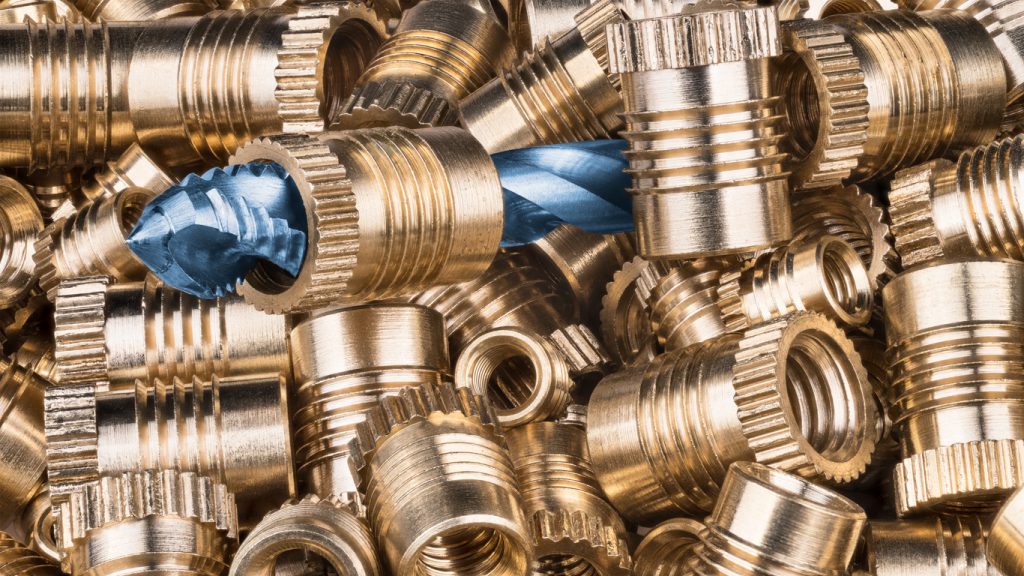Can Threaded Inserts Be Used on All Types of Wood?

Close-up of shiny metallic nut heap and detail the cutter tool for threading
From dovetail joints to biscuit joints, you have various ways to join multiple wooden workpieces and make the framework. But these joints are not appropriate for all woodworking jobs, and one of them is joining two wooden bars on top of each other. In such a situation, professionals usually use nails or screws. While these hardware components can form strong joints and hold the wood pieces together, they come with several downsides, including scratches and holes that can render the workpiece unusable. This is where threaded inserts come to the rescue. Read on to explore how they can benefit you and make your woodworking job easier.
WHAT ARE THREADED INSERTS AND WHY ARE THEY USED?
As the name suggests, threaded inserts feature threads on the outer and inner sides and must be inserted into the wooden boards. They come in different depths and diameters, ensuring you can use different metal screws to fasten two wooden workpieces easily.
Following are some of the benefits of using threaded inserts for joining wooden pieces:
- When using soft plywood or wooden materials, you cannot drive nails or screws directly, as that can make the workpiece snap into halves. That’s why most carpenters use a threaded insert to quickly drive the screws or wood nails into softer workpieces.
- One of the significant advantages of using threaded inserts is that they are reversible. They allow you to easily take the nails or screws out and insert new ones into the wooden workpieces without drilling another hole or creating a new mark at some other place.
- When reinforcing wooden workpieces with screws, most workpieces suffer from surface damage like scratches. That’s why you should get a threaded insert as you need to install it into the wooden workpiece one time.
- Since threaded inserts are made from brass, stainless steel, or plastic, you will have many options to choose from based on your work requirements. Plus, they don’t quickly rust or suffer from corrosion, extending the joint’s lifetime.
CAN THREADED INSERTS BE USED WITH ALL WOOD TYPES?
Yes, threaded inserts can be used with all wood types, from hardwood to softwood. But you should ensure the insert’s length is less than the workpiece’s thickness to prevent any damage.
HOW TO INSTALL THREADED INSERTS INTO WOOD PIECES
To make the most of threaded inserts, you should learn how to install them into workpieces. In the below section, we have explained the right way of installing them into hardwood or plyboards.
Drill the hole
You should drill the hole into the workpiece while ensuring the depth and diameter of the drill bit are in sync with the threaded inserts. For this, you can place parchment paper on the wooden workpiece and keep the insert on it. Subsequently, mark the edge and use a drill bit of the same size.
Screw tap bolt
Screw the tap bolt into the threaded insert to get a larger, more prominent hexagonal head. It makes driving the hardware fastener into the wood workpiece more efficient.
Insert the threaded insert
Put the threaded insert into the wooden workpiece by turning the hexagonal head in a clockwise direction.
Drive the insert further
Once the insert is inserted halfway down the drilled hole, you should use a ratchet system to drive it inside the wooden workpiece.
FINAL WORDS
Threaded inserts have proven to be way more beneficial than any other metal fasteners for wood joining. They can help keep multiple wood pieces stay attached with ease, eliminating the need to drill multiple holes in the wooden workpiece and weaken it.
